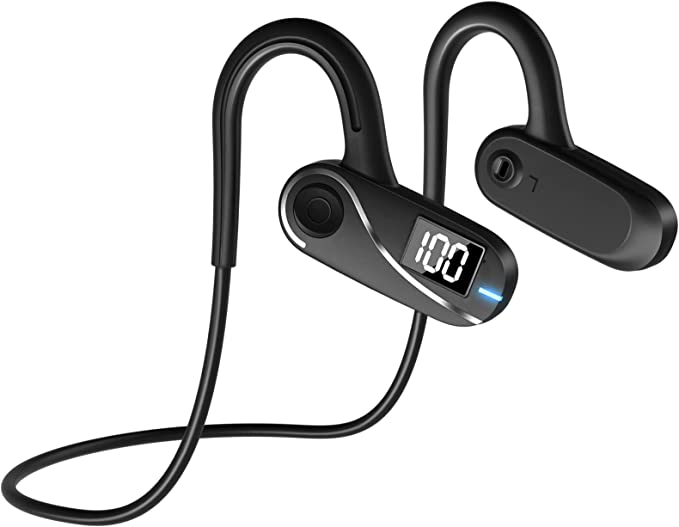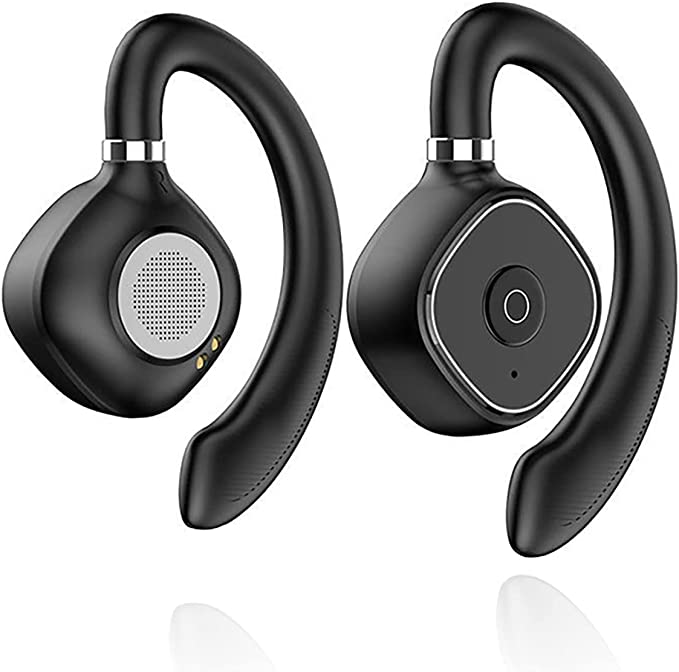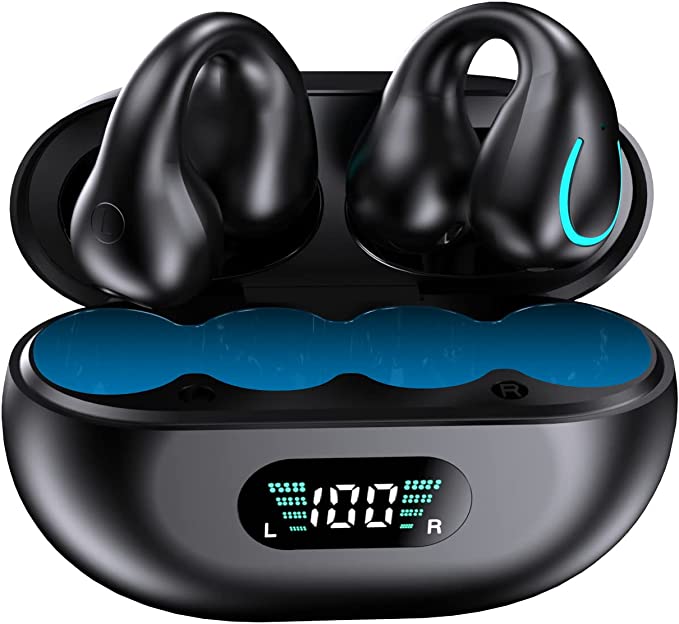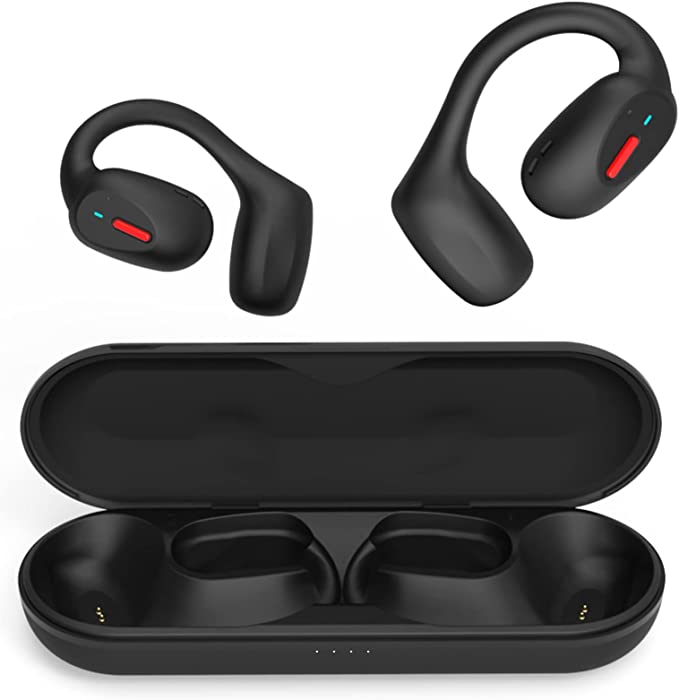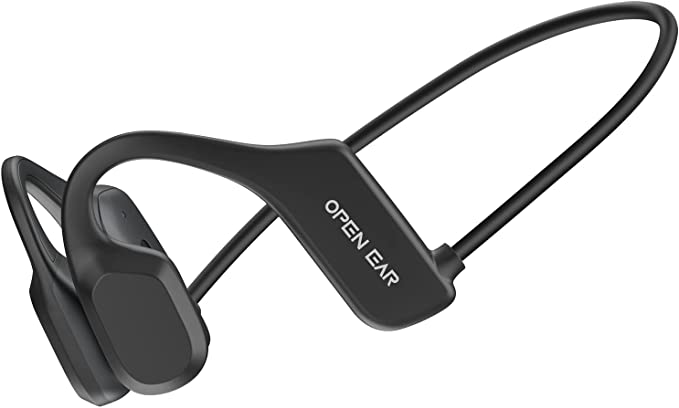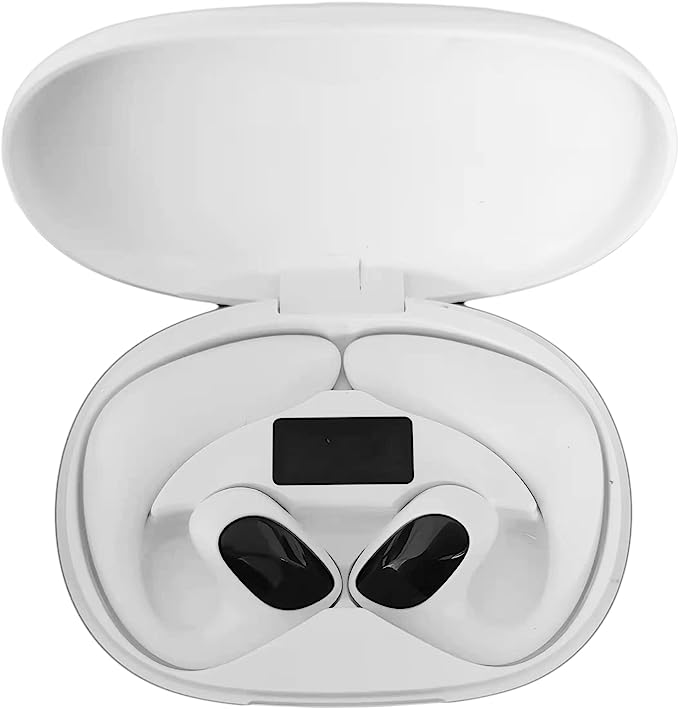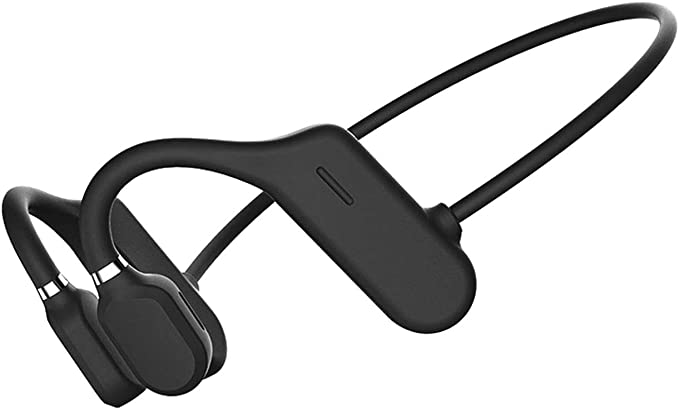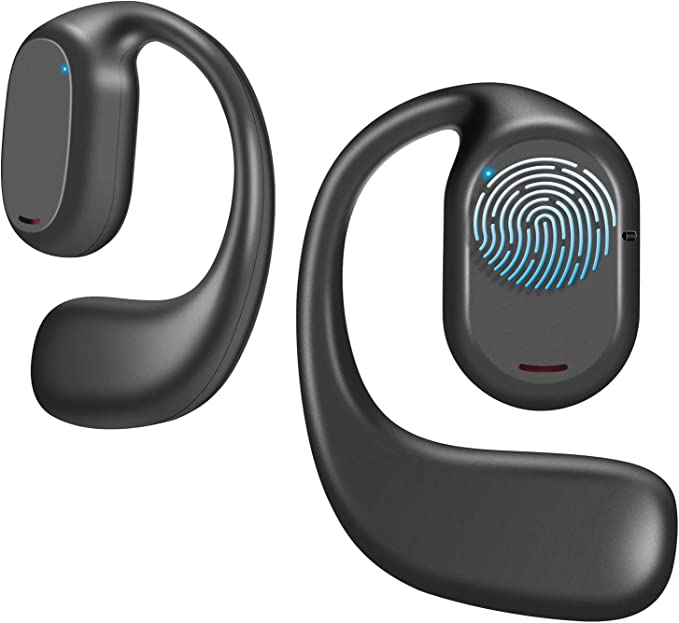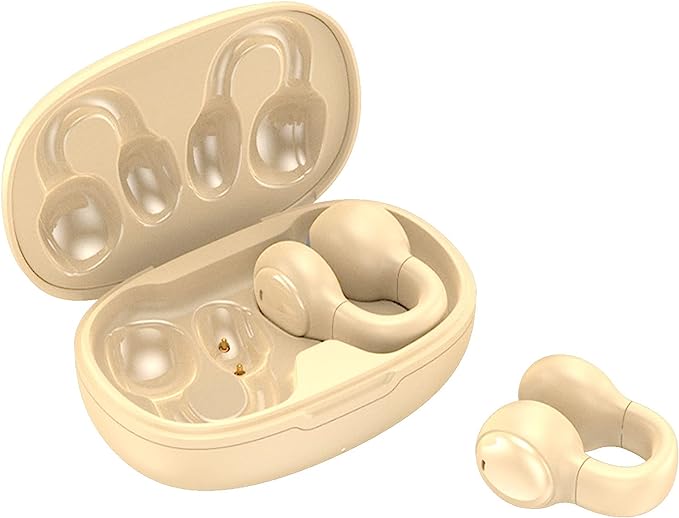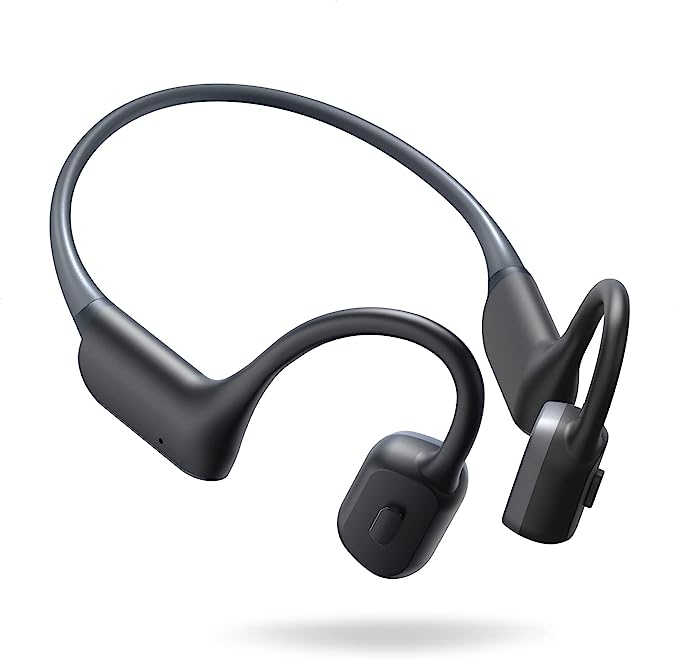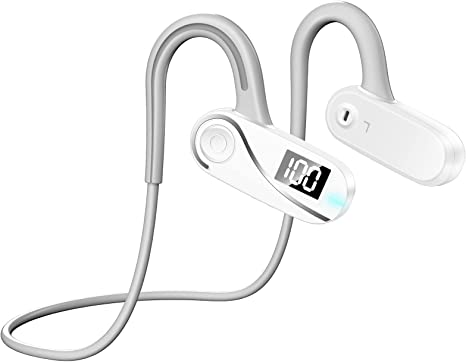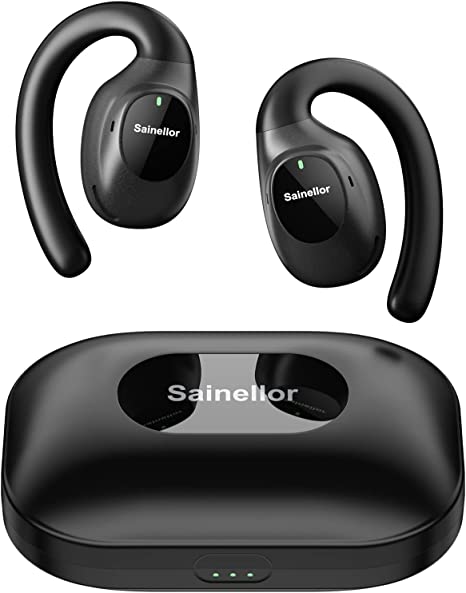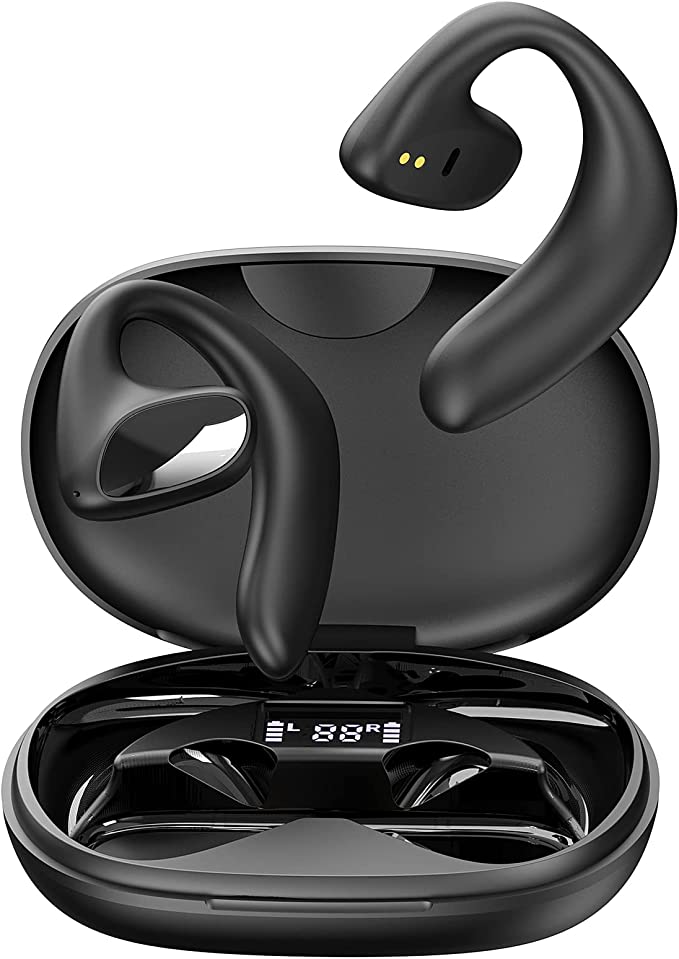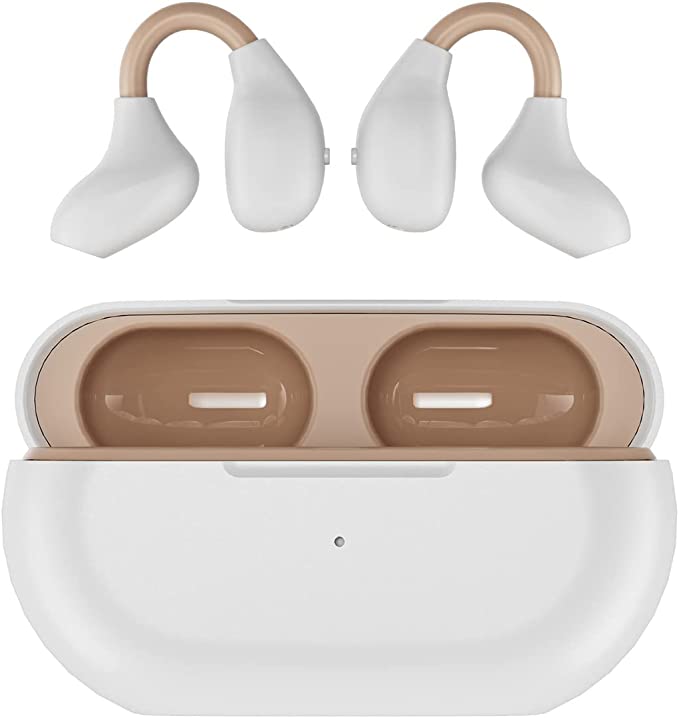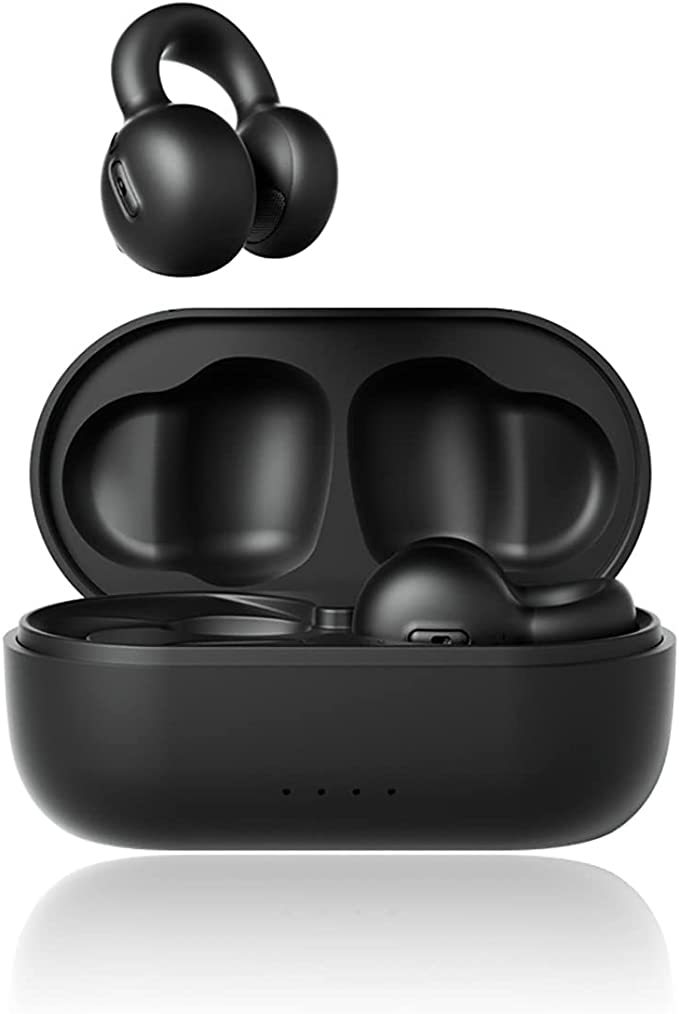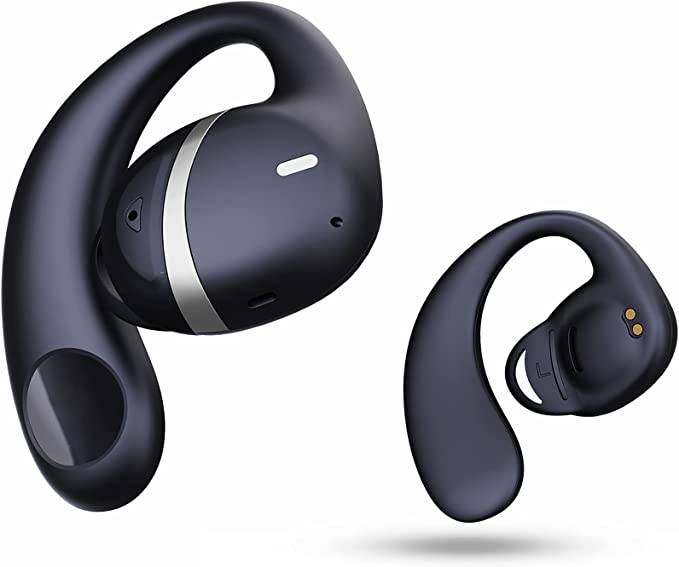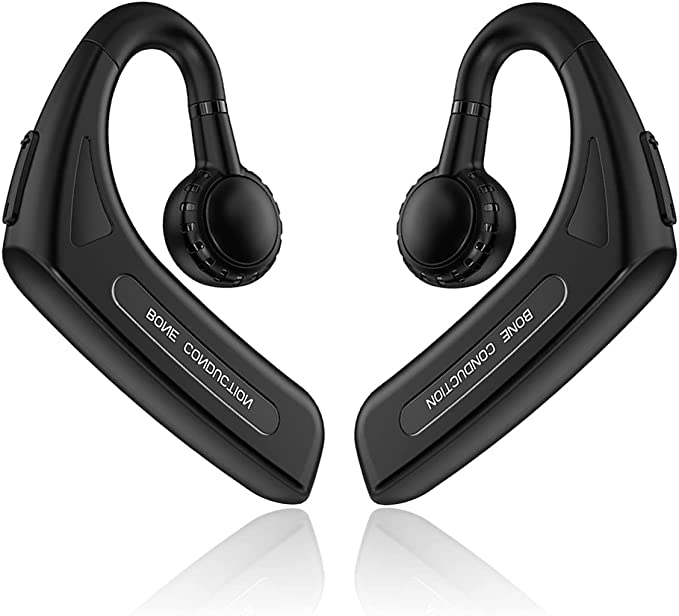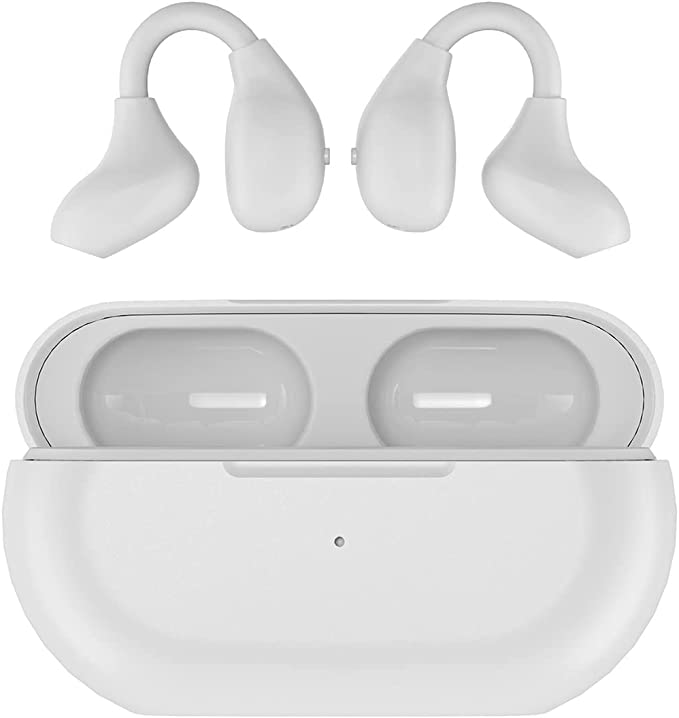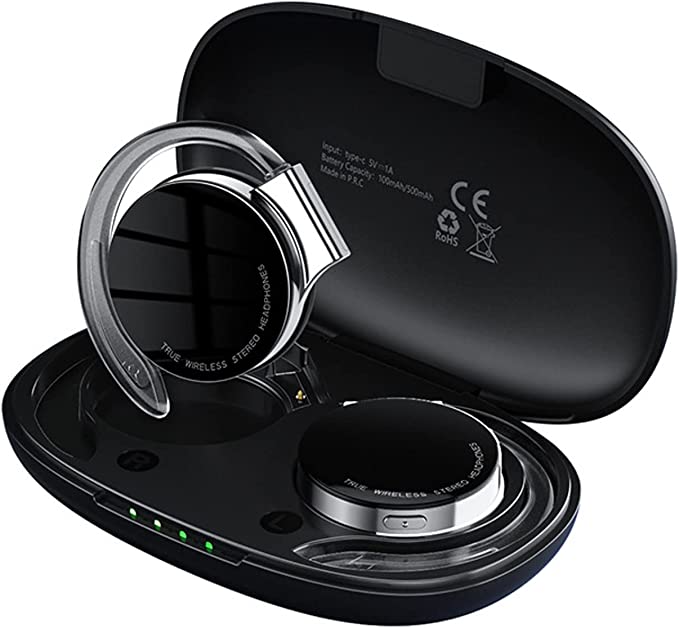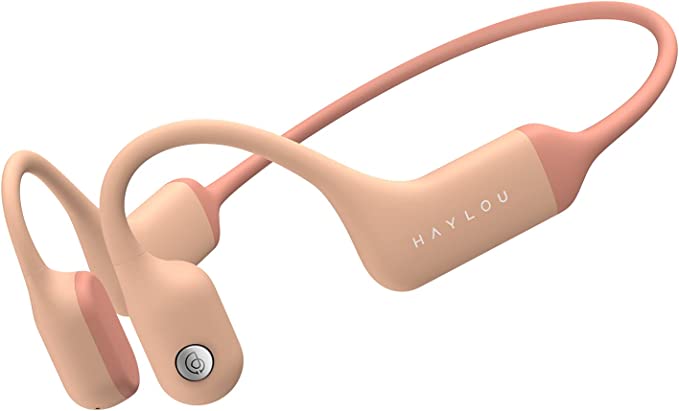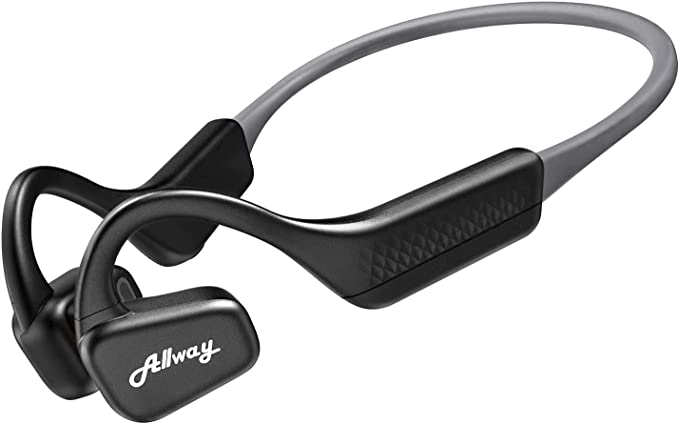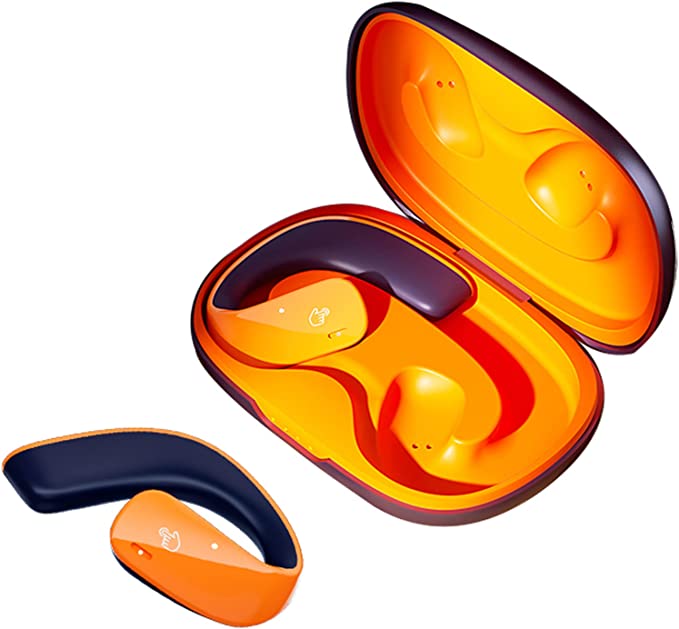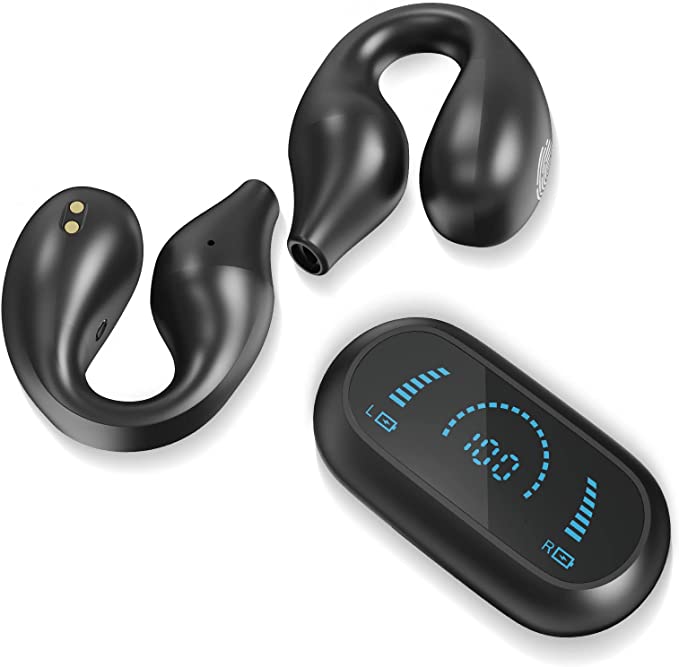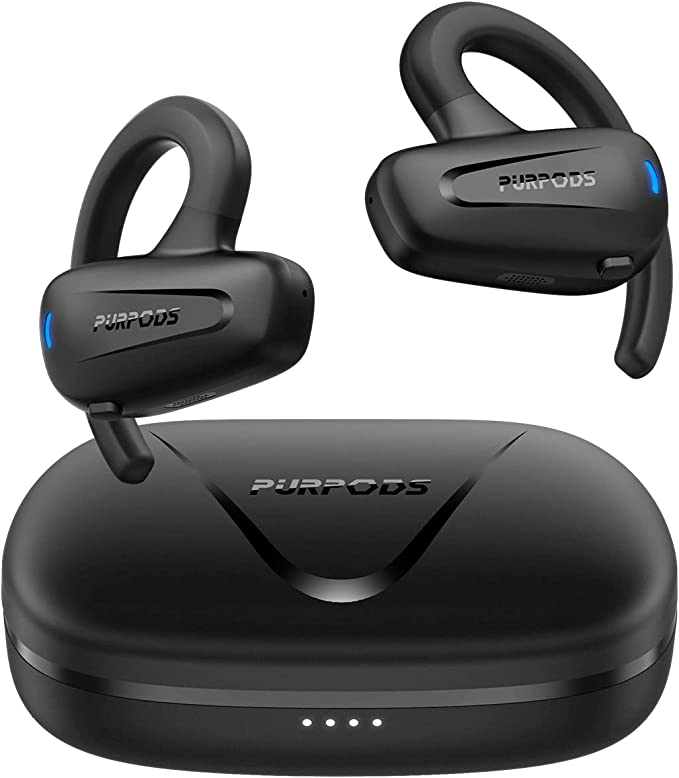Loluka Open Ear Earbuds: Unpacking "Bone Conduction" Claims & The Science of Open-Ear Audio
Update on June 21, 2025, 10:38 a.m.
In our quest for the perfect personal audio experience, a common dilemma arises: how do we immerse ourselves in music or podcasts while remaining safely aware of the world around us? Traditional earbuds often seal off the ear canal, creating a private sound bubble but also a barrier to environmental sounds. This is where open-ear headphone designs step in, and the Loluka Open Ear Bone Conduction Earbuds present themselves as an affordable option in this category. But with a name that includes “Bone Conduction,” it’s worth a closer, scientific look to understand what they truly offer.

Sound Science 101: How We Hear and What “True” Bone Conduction Entails
Before we dive into the specifics of the Loluka earbuds, let’s refresh our understanding of how sound reaches our brains. The most common pathway is air conduction. Sound waves travel through the air, enter the ear canal, and cause the eardrum to vibrate. These vibrations are then transmitted through the tiny bones of the middle ear (the ossicles) to the cochlea, the snail-shaped organ in the inner ear. Inside the cochlea, hair cells convert these vibrations into electrical signals that the auditory nerve carries to the brain, which we interpret as sound.
True bone conduction offers an alternative route. Instead of traveling through the ear canal and middle ear, sound is transmitted as vibrations directly through the bones of the skull (typically the cheekbones or temporal bones) to the inner ear. Specialized transducers press against the bone, and their vibrations effectively bypass the outer and middle ear structures. This method is employed in some hearing aids for specific types of hearing loss and has gained popularity in certain sports headphones because it leaves the ear canal completely unobstructed, allowing the wearer to hear ambient sounds clearly. True bone conduction headphones typically have vibrating pads that rest on the bone in front of or near the ear, not speakers pointing into or at the ear canal opening.

The Loluka Enigma: Decoding the “Bone Conduction” Claim
The full product name is “Loluka Open Ear Bone Conduction Earbuds , Wireless Ear Clip Bone Conduction Headphones Head Set Bluetooth Open Ear Headphones Wireless Bluetooth Bone Conducting Earphones Ear Buds for Small Ear Canals.” This name heavily emphasizes “bone conduction.” However, a critical look at user feedback, particularly from Amazon’s Vine Customer Review of Free Product program (where reviewers receive products at no cost for unbiased reviews), tells a different story.
Reviewer Dawson, for instance, states outright, “Right away, these are not actually bone-conducting. They clip onto the back of the ear with the speaker pointed into the ear canal, but not actually inserted into the ear canal. So, they’re open-ear headphones.” Kimmy Shopz echoes this: “As other reviewers have mentioned, these are not bone conduction earbuds. They are a little speaker that you position near your ear canal.”
This distinction is crucial. It suggests that the Loluka earbuds likely operate as open-ear, air-conduction headphones using an ear-clip design. Small speakers are probably housed in the part that clips onto the ear, directing sound towards the ear canal opening without sealing it. This still achieves the “open ear” benefit of allowing external sounds to be heard, but the mechanism is different from true bone conduction. Understanding this helps set realistic expectations for sound quality and feel. The “bone conducting” in the name seems to be more of a stylistic or keyword-driven choice rather than a reflection of the core technology at play.

A Closer Look at the Loluka Q80: Features Through a Scientific and User Lens
Let’s dissect the features of these earbuds, implied to be model Q80 from the description “Q80 ear clip bone conduction headphones,” integrating scientific context and user observations.
Design Philosophy: The Ear Clip and the Open Promise
The Loluka earbuds boast a weight of just 0.1 OZ each and are crafted from “skin-friendly soft silicone material.” From a materials science perspective, silicone is often chosen for its flexibility, durability, and hypoallergenic properties, contributing to potential comfort. The very light weight aims to minimize wearer fatigue over extended periods.
The “ear clip” design itself is an attempt to balance stability with an open-ear experience. User feedback on comfort and fit is mixed, which is common for any ear-worn device due to the vast individual differences in ear anatomy. Kimmy Shopz, who identifies as having a small ear canal, found them to “fit securely” and more comfortable for extended wear than traditional earbuds. Conversely, Karen Lyons reported that “they made her ears hurt and very uncomfortable” after a short period. Dawson found them “surprisingly securely” held for day-to-day activities, though perhaps not for strenuous exercise. This highlights that while the design may target “small ear canals,” personal comfort will vary.
The undeniable benefit of this open-ear approach is situational awareness. By not occluding the ear canal, users can hear traffic, conversations, and other environmental cues, which is a significant safety advantage for outdoor activities like jogging, biking, or even just walking in busy areas.
The Audio Question: Sound Quality in an Open Format
It’s a fundamental acoustic trade-off: open-ear designs, which allow ambient sound in, typically struggle to deliver the same level of bass response and sound immersion as sealed in-ear headphones. This is because a good seal helps to trap sound energy, especially lower frequencies.
User reviews for the Loluka earbuds align with this expectation. Dawson found the audio quality “quite good” and “well-balanced enough for voice, music, gaming, and video” for the price point, and noted they are “surprisingly loud.” However, Kimmy Shopz described the music sound quality as “mediocre,” stating, “You are not going the get the range, depth or clarity like you would with a good pair of headphones…good enough for a workout.” Karen Lyons also found the “sound quality on music wasn’t as good.” This isn’t necessarily a flaw of the Loluka earbuds specifically, but rather a characteristic of this type of open-ear, air-conduction design, particularly at a budget price of $24.99.
Connectivity and Calls: The Role of Bluetooth 5.3 and ENC
The earbuds are equipped with a Bluetooth 5.3 chip. Generally, newer Bluetooth versions like 5.3 can offer improvements in connection stability, data transfer speed, power efficiency, and potentially lower latency compared to older iterations. Dawson mentioned not noticing “any appreciable audio lag when watching video,” which is a positive sign.
For calls, the product features “2 mics with environmental noise reduction technology.” This is often referred to as ENC (Environmental Noise Cancellation) and primarily works to suppress background noise around the wearer, so the person on the other end of the call hears the wearer’s voice more clearly. It’s different from ANC (Active Noise Cancellation) which is designed to cancel out noise for the listener. Kimmy Shopz reported that the earbuds “worked great” during a phone call, with the other person coming through “loud and clear” and being heard clearly as well. Joe L also noted the “microphone is of good quality which makes phone conversations pleasant.”
Powering Through: Battery Life and Charging Conveniences
Loluka claims the earbuds can play continuously for 6.5 hours, with the charging case extending the total playtime to 30 hours. The case itself can be fully recharged in 1.5 hours via USB-C. This is quite robust.
User feedback strongly supports these claims. Dawson found the “battery life is excellent,” and Karen Lyons also praised the “long battery life.” The ability to use them one at a time while the other charges is a practical perk. The charging case, as Kimmy Shopz noted, has an LED screen showing the battery level, adding to convenience.
Control and Convenience: Pairing and Touch Interactions
The earbuds utilize a Hall switch for “Automatic Pairing.” This means after the initial Bluetooth setup with your device, simply opening the charging case should trigger the earbuds to turn on and connect. This is a common and user-friendly feature in modern wireless earbuds.
“Smart Touch Control” is also advertised, allowing users to control music, volume, calls, and voice assistants by touching either earbud. However, this is an area where user experience seems to falter. Dawson was “not impressed with the touch controls,” stating, “They don’t give any kind of feedback to know you’re even hitting them correctly, and sometimes they don’t seem to register at all.” This can be a significant usability issue if on-device controls are frequently used.

The Verdict on “Bone Conduction” and Who These Earbuds Are Really For
Let’s be clear: based on the user descriptions of speaker placement and the general understanding of audio technology, the Loluka Open Ear Earbuds are highly unlikely to be true bone conduction devices. They appear to be open-ear, air-conduction headphones that clip onto the ear, directing sound from small speakers towards the ear canal. The “bone conduction” in their name is, at best, a confusing marketing term or, at worst, misleading.
That said, as open-ear, air-conduction headphones, they cater to a specific set of needs and users: * Those prioritizing situational awareness: Runners, cyclists, walkers, or anyone needing to hear their surroundings for safety. * Individuals sensitive to in-ear pressure: For some, especially those with small ear canals, the non-intrusive ear clip design might offer more comfort than traditional earbuds, though experiences vary. * Users needing basic audio for calls and casual listening: If audiophile-grade music is not a priority, but clear calls and the ability to hear podcasts or background audio during activities are, these could suffice. * Budget-conscious consumers: At $24.99, they are an inexpensive entry point to the open-ear audio experience. * People who value long battery life: The endurance of these earbuds is a standout feature.
However, one user, Joe L, reported a significant build quality issue: “I’ve used it for a month and the left side no longer works… Somewhat disappointed about their build quality.” This raises a flag about long-term durability, which is always a consideration with budget electronics.

Conclusion: Listening with Open Ears and an Informed Mind
The Loluka Open Ear “Bone Conduction” Earbuds (model Q80) provide an affordable pathway to an open-ear listening experience, which is undeniably valuable for maintaining awareness of one’s surroundings. Their strong battery life and generally clear call quality add to their practical appeal for certain users.
However, it’s crucial for consumers to understand that the “bone conduction” terminology used in the product’s name and description appears to be a misnomer. These function as open-ear, air-conduction headphones, clipping onto the ear rather than vibrating the skull. This understanding manages expectations regarding sound quality – which is generally described as adequate for calls and casual listening but not immersive for music – and the overall sensory experience.
Potential buyers should weigh the benefits of situational awareness, decent battery life, and a low price against the compromises in sound fidelity, the mixed reviews on comfort and fit, potentially frustrating touch controls, and a question mark over long-term durability. Ultimately, the Loluka earbuds serve as a practical example of why it’s important to look beyond marketing buzzwords and understand the underlying technology and real-world user experiences before making a purchase. They invite you to listen with open ears, and also with an informed mind.
